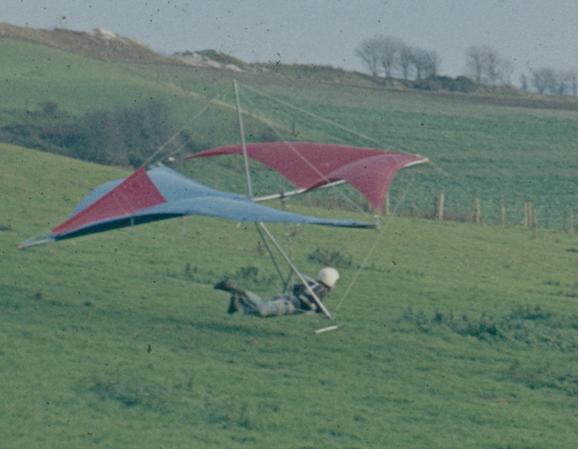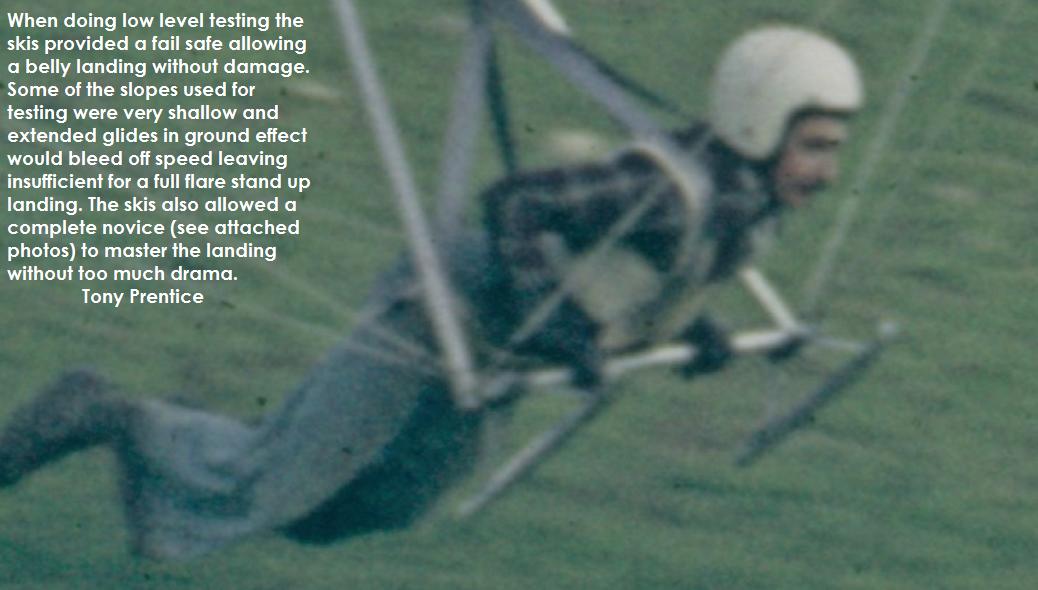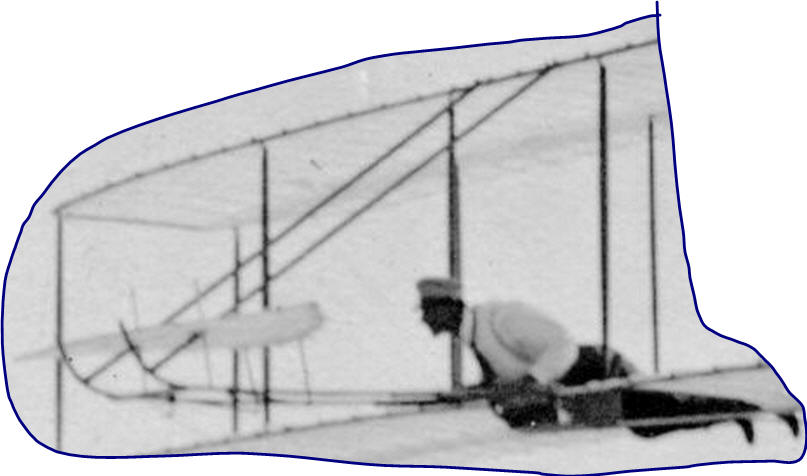Continuing earlier matter:
Christopher noted
Teflon ski versus wheels for HG? Tue, Jun 12 2012, 8:50:10 pm
Thanks for including the correspondence, Joe. Do you have anything to report on the little skid-pods I've seen (mostly on ridgeds)?
=================
Christopher wrote:Thanks for including the correspondence, Joe. Do you have anything to report on the little skid-pods I've seen (mostly on ridgeds)?
Good lead, Christopher. Others are welcome to post clips of front-space whack-not mitigation structures
on any aircraft as a preamble for facing your question and for displaying a design solution pool.
I will be editing this post with the same target. Spoons, flat bills, skids, bulbous wheels, rollers, deployables,
frontal skis, etc. are invited. A tiny wheel can act as a sharp gouging penetrating spear when impacting
various ground structures and textures. An initial contact of a wheel is often an infinitesimal point where
friction is needed to get the wheel turning; yet one may still get stuck in sand and mud with a spinning wheel.
Spoon-faced skids, skids with arc fronts, wide rollers, etc. are options. Even a mono-wheeled-circumferenced HG
is being examined. Have a gooney-bird long neck that splats and slides?
For some early warming-up visuals, see the page:
http://wright-brothers.org/History_Wing ... s/UFOs.htm where there are some instances of A-frame, pilot behind A-frame, and anti-whack solutions.
Then for preliminary study:Lazair frontal bulbous wheel wrote:To start at the moment, just a meditation over a clip from a Lazair:

SG-38 primary glider wrote:
Model RC copter clip wrote: 
Swift version wrote: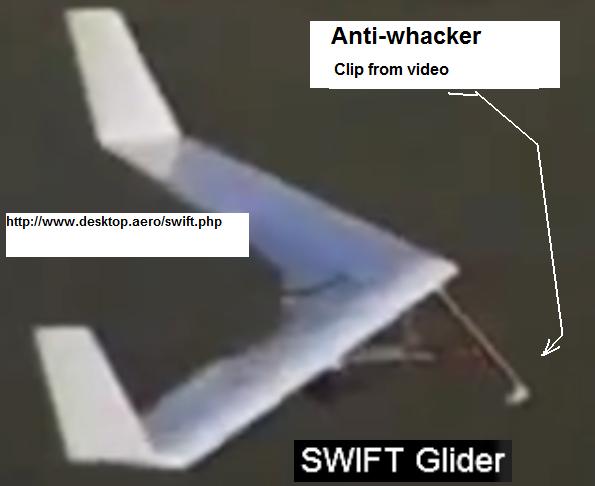
Long neck as skid structure wrote:

Caged blunt beak on a foot-launched homebuilt wrote:
Felix du Temple, 1874 with small wheels as leg feet of A-frame wrote: Notice that the A-frame down tubes seem to be deliberately non-straight,
perhaps to allow immediate "give" upon contact with the ground.
The pre-curve would allow arcs in the A-frame side legs to give a cushioning effect.

Nose-to-base frontal nose skid wrote: Notice that there are two types of A-frame in this glider. There are two inverted A-frames
that seem to integrate with the anti-whack nose-to-base while firming tie with the fuselage central-keel structure.
Then there is the Pilcher-like or Wenham-like A-frame that supplies kingpost
and double queenpost rigging points at the ends of its base bar.
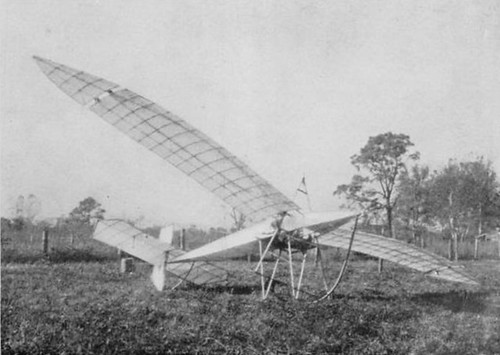
Going the BIG wheels direction on A-frame base of a Karl Willing craft wrote:
Minimal frontal guard in 1894c probably by Charles Proteus Steinmetz wrote: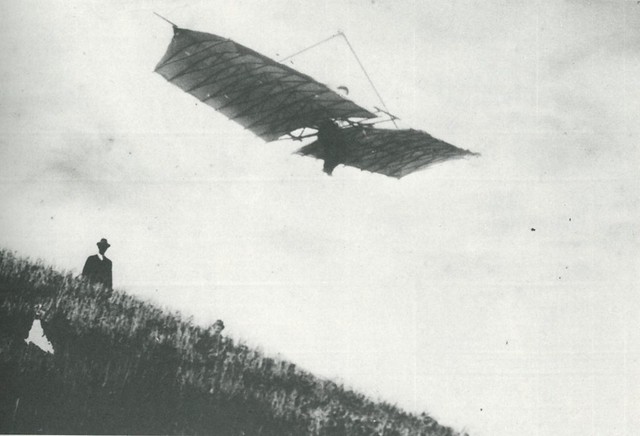
John J. Montgomery's Evergreen and its very-low or awful mitigation of beaking; the stick studs? wrote:
Santos Dumont Demoiselle combination of large wheels and front skids upon base of A-frame wrote:
LOWER PHOTO: Version Demoiselle (replica) BAPC.194 (photo, Nigel Roling/Pentavia):

The Otto wing-integrated hoop-nose solution wrote:
In this earlier 1891 Otto wing flight, is the pilot wearing a toroid neck-cavity-filling wrap? Or what? wrote:In this early Otto wing there is barely seen the hoop structure.


Some mitigation seen at the 1909 Aviation Week in Rheims of the Antoinnete wrote:

Sir George Cayley understood need for whack mitigation wrote:
From E.J. Willis Company's Aeronautical Supplies Catalog of parts published in 1912: Farman detail wrote:
Control so one does not whack: 1912 seat offer in catalog:

Gustave Whitehead hang glider wrote: with pilot hanging behind control frame which is integrated with cockpit frame;
there is little-to-no anti-whack mitigation devices in his hang glider as he approached the design of his Albatross.

Notice how the skid is integrated in a streamlined bulbous nose. wrote:
These two hanging in a suspended hull attached behind the front wheeled A-frame wrote:The nose-in mitigation seems to be a combination of the hull and wheels and controls.
Grade Doppelsitzer ~ Tweer, Hans Grade 
_____________________ Gustav Tweer in rear; Hans Grade in front.
Ski me over wet ground … wrote:
The Lohner Traube wrote:had a complex A-frame featuring two sets of two wheels as well as the foreward nose-in ski skids (two).
I am holding that the inverted catenary-curved basebar would be able to cushion landing loads.
Note also that the craft had a second A-frame to play kingpost-double-queenpost role.
This two-seater of 1914 had the two pilots up into keel fuselage unlike the Grade Doppelsitzer
where Tweer and Grade were suspended beneath the keel behind the A-frame (see above).

Others are invited to find and post for study any mitigation of the landing-nose-in challenge.
As aircraft found control mitigation for pitch in the landing sequence and gained confidence, then one sees
a devolution of the frontal solutions. The flying canards and the holding structures for them
double roledas nose-in mitigation; a canard aerodynamic control combined with mechanical skid solution is found in many craft.
The canard family can be edited into this thread as anyone finds good examples, not the least such in the Wright Brothers
experiments. The pitch-control direction of
"High Hats"has little following yet, and seems yet not to have been much explored; the bird tail for
empennage guide
seems to have been dominant by far over the canard or the
high-hat directions.
Yet we are not done exploring for hang gliding.Nil mitigation of nose-in. wrote:Note this 1908 gliding-club hang glider has the very common A-frame that we still use today
cleaned up and modified mostly; the pilot was hung from the keel behind the A-frame down tubes or legs
while he grasped the base bar; the control frame was cable-stayed
and acting as two queenposts as is common to hang gliders most popular today.
The wing is resting on his shoulders while posing. Such basic triangle control frame stayed good for some purpose even while such
was morphed into thousands of versions of undercarriage for kites, gliders, and powered aircraft. The simplicity for pendulum weight-shift control
was not overlooked by the later decades of water-ski kiters and ski-kite-gliders as they could fall and nose in water without wheels; some
later added floating skidding pontoons; when on land: wheels and Prentice skis to the basebar and it extended. Wing runners and those
mitigating nose-ins, whacks, beaking, etc. are looking for mitigation (besides learning to fly well, so that there won't be a need for a mitigation!).
But unwanted pitch-ins occur and one may not want to be without a mitigation of the injuring forces. So, visiting the past and future
just may bring on some design solutions of interest. The No-More-Whack Club and the Wing Runners of
WWRA have a keen interest
in
Safe-Splat solutions.
All are invited to play for advances. Share your ideas however yet unbaked they might be!
http://imechanica.org/node/5255
Nil frontal mitigation of nose-in, but tail control; A-frame with keel-hung-pilot. wrote:Gustav Tweer with "Grade" Eindecker (monoplane)

Note how the A-frame is basebar wheel for some mitigation. But notice also how the A-frame legs are let through smoothly to become kingpost players.

In case landing involved being upside down, there was even an A-frame on top and one on bottom, the X deal! wrote:








 Home
Home


